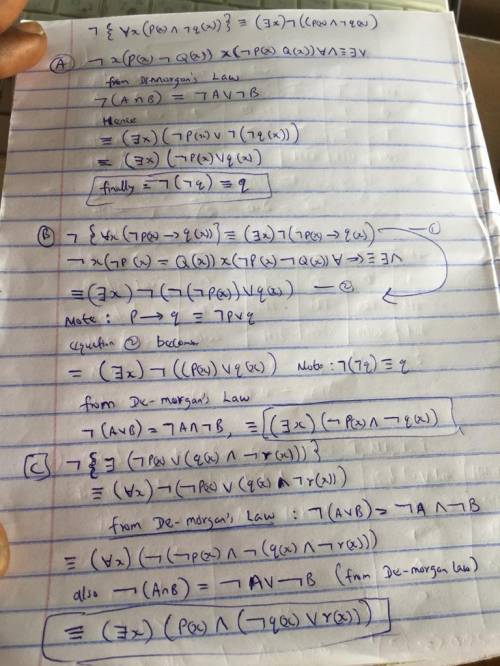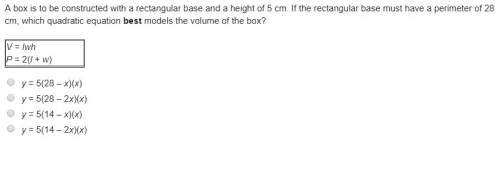
Mathematics, 24.08.2020 01:01 92terbes
Use De Morgan’s law for quantified statements and the laws of propositional logic to
show the following equivalences:
a) ¬ x(P (x) ¬Q(x)) x(¬P (x) Q(x))∀∧≡∃∨
b) ¬ x(¬P (x) = Q(x)) x(¬P (x) ¬Q(x))∀⇒≡∃∧
c) ¬ x(¬P (x) (Q(x) ¬R(x))) x(P (x) (¬Q(x) R(x)))

Answers: 1


Other questions on the subject: Mathematics

Mathematics, 21.06.2019 15:00, kalebstone8357
Find the product of (4x + 3y)(4x − 3y). 16x2 − 24xy + 9y2 16x2 − 9y2 16x2 + 24xy + 9y2 16x2 + 9y2
Answers: 1


Mathematics, 21.06.2019 18:10, TrueMonster8911
What is the equation in slope-intercept form of the linear function represented by the table? y -18 -1 -8 4 2 912 o y=-2x-6 o y=-2x+6 o y=2x-6 o y = 2x+6
Answers: 1
You know the right answer?
Use De Morgan’s law for quantified statements and the laws of propositional logic to
show the follo...
Questions in other subjects:



Spanish, 20.06.2021 14:00



English, 20.06.2021 14:00

History, 20.06.2021 14:00

Business, 20.06.2021 14:00

Computers and Technology, 20.06.2021 14:00

Mathematics, 20.06.2021 14:00





